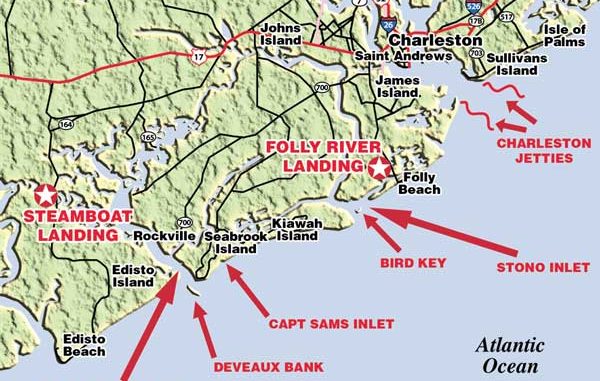
The only thing hotter than the weather during ‘Dog Days’ is the inshore bite for tarpon, sharks and bull redfish.
Anchored up off a long sandbar outside the mouth of the Stono River, guide Chris Chavis shared his philosophy on mid-summer fishing.
“You never know which bite it’s going to be, so you’ve got to treat all of them like this is the one” he said.
Just about that time, one of the rods began to take on a little personality, then bent double as the spinning reel’s drag screamed.
Chavis grabbed the rod and hung on as the 8/0 circle hook bit into an unseen guest. Given the hot sun overhead, the 80-degree-plus water temperature and the time of year, it was almost a certainty that the other end of the line held one of the countless sharks, stingrays, yard-long redfish or, hope upon hope, a 100-pound tarpon — all known to frequent the inshore sandbars along the coastline.
Wading through a number of sharks and rays is par for the course when looking for those one or two silver king bites. Chavis starts the day looking for a tarpon, but a bite is no guarantee of a fish. The odds are simply too stacked in the tarpon’s favor.
As it turned out, the fish Chavis was hooked up with was a 3½-foot sandbar shark that put up a respectable battle before coming to the boat, where he was dutifully unhooked and returned to the water.
Sharks and rays are a large part of summertime fishing, especially where live or cut baits are employed, and they often get undeserved, upturned noses from local anglers. Most of the fish caught are likely to be released, and sharks are plentiful and willing.
Chavis, a native of James Island, has been fishing the inshore waters from Charleston to Edisto his whole life and guiding the past 15 years. He fishes for all kinds of species throughout the year but concentrates most of his efforts in August on the scattered run of tarpon that makes its way into South Carolina waters during the warmer months.
“On occasion, you may find a small concentration of tarpon, but mostly it’s one or two loners working edges and drop-offs of deeper holes and channels,” said Chavis, who operates Fin Sstalker Charters. “Tarpon start moving into our waters in June, but the action really doesn’t peak until around August. There will be days that I see them rolling or cruising bars, but for the most part, catching a tarpon is a matter of setting up in a likely area that they will come through looking for bait to feed on”.
In August, tarpon prefer to hang out around cuts in sandbars or other fish-holding structure near the surfline, and they are particularly drawn to the mouth of inlets. Tarpon feed on large mullet or schools of menhaden that have reached hand-size or better by the time August rolls around.
Chavis fishes whole live baits and will vary the depth at which they’re fished, putting a couple on the bottom and a couple in the upper part of the water column suspended under a cork — and at least one bait on a freeline, downcurrent of the boat.
“I prefer to anchor the bow of the boat above the structure I’m fishing, whether it’s a sandbar or rock pile or just a good drop off near the edge of a channel,” Chavis said. “I like to start at dead low tide, which usually gives me enough time to catch bait on the way out to the mouth of the inlet, then get set up and fish the incoming tide. I really believe one of the most important factors in getting a tarpon to bite is fresh clean water coming in from the ocean on an incoming tide.”
Chavis’ bread-and-butter locations to find tarpon are inlets ranging from Charleston Harbor down to the South Edisto River and all the major inlets in between. These include Frampton Inlet on Edisto Island, the North Edisto River, Captain Sam’s Inlet on Seabrook, and Stono Inlet between Kiawah Island and Folly Beach.
While inlets are his mainstay, Chavis also has a lot of favorable experience fishing large bars like Deveaux Bank off the point of Seabrook and Bird Key in the mouth of the Stono River. He will anchor on the outside edge of these areas, often outside the surfline, and target cruising tarpon as they move in with the tide.
Sometimes, anchoring the boat is a matter of coordinating both wind and tide; his preference is to have the wind at his back and fish baits downcurrent. This makes for ideal boat positioning, so long as the downwind and downcurrent area is also conducive to attracting fish.
Chavis prefers to fish with heavy-duty spinning outfits: a 15- to 20-pound spinning rod coupled with a high-capacity reel spooled with 40-pound braided line. Attached to the main line is a 4- to 6-foot length of 80-pound monofilament or fluorocarbon leader.
With his lines downcurrent, he wants to use just enough weight to keep the bait on the bottom, so a 2-ounce pyramid or bank sinker is standard. He may attach a large split shot to the freeline rig, which will run far behind the other stationary baits, to keep the lines apart. A “popping cork” rig is tied between the main line and the leader for those baits he wants to suspend just below the surface.
“It’s important to cover a lot of different water depths, which is why my typical set-up includes a mix of downrods, corks and a freeline,” Chavis said. “There’s no real hurry to get to a rod when you have a bite, either. I tell my clients to grab the rod when they hear the drag start to scream.”
When it all comes together and a big tarpon is on the line, Chavis said the chances are still good the fish can get off.
“I typically set my reels at one-third of the breaking strength of the line” he said, “When he gets that big head out of the water and starts rattling those gill plates, it’s easy for him to cut the line. You’ve got to put the heat to him to keep him from running too far from the boat, but give him some slack when he comes up.
“The old saying ‘bow to the king’ is right; the angler needs to throw a little bit of slack in the line by extending the rod tip to the fish. If he comes all the way out of the water and lands on a tight line, he’s gone.”


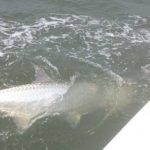
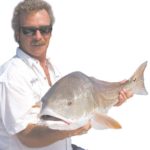
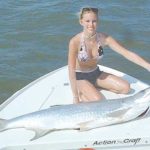
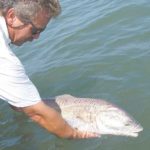
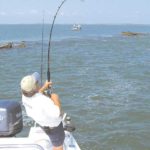



Be the first to comment